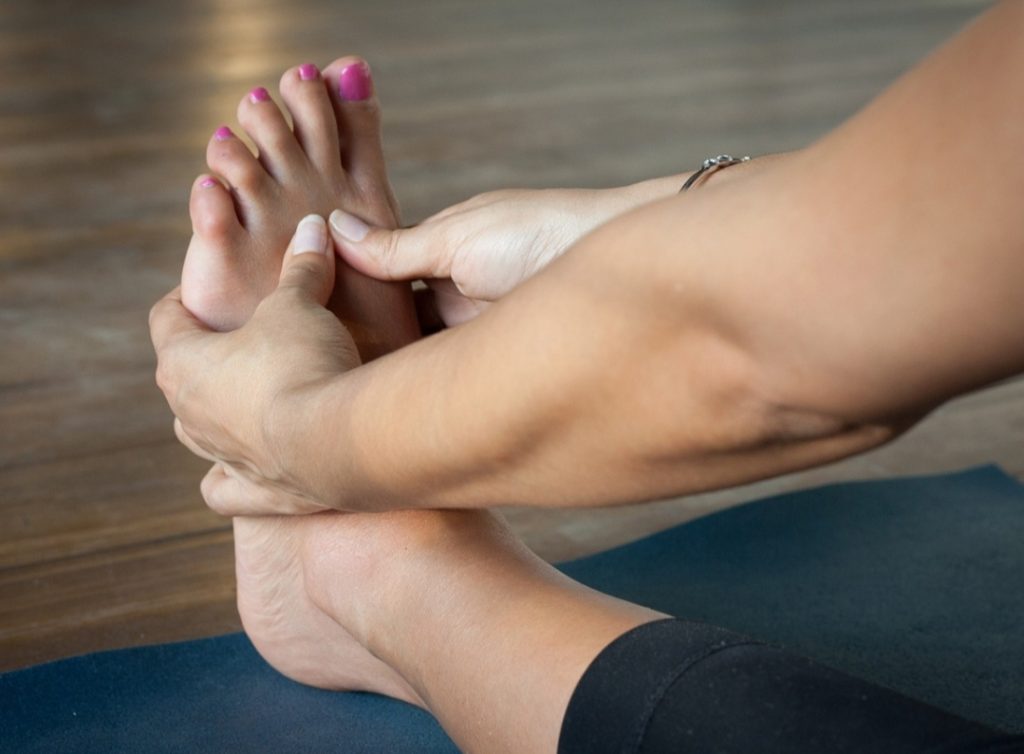“Oh hon, I wish we could go tonight, but I’m just not up to it.”
“I’m sorry, I’m afraid I’ll have to cancel. That pain has flared up again.”
“Thanks for your understanding. I really hope to get past this soon.”
These are snippets of conversations that I’ve had with my husband and friends as they relate to my health, specifically pelvic pain, which has been an interruption to my life and plans for many years. For me to be able to now say that I have been released from this pain and that I have an answer to what caused it, gives me the greatest joy. But getting to this place was not the path I expected to travel, and that’s why I wanted to share it.
Most women grow up experiencing some sort of pelvic pain with menstruation. Some may have an easier time with it and need to take an anti-inflammatory once a month, but for others it’s more than just a monthly discomfort. Some, unfortunately, have to bear the pain of endometriosis (see our related blog) where the tissue grows outside the uterus, implants, then sheds with menstruation. This often starts with ovulation, weeks before a woman’s period begins, leaving her with pain that can disrupt 3 out of 4 weeks of each month.
My experience with “endo” began when a gynecologic surgeon removed a grapefruit-sized tumor that had wrapped around my fallopian tube, cutting off the blood supply to an ovary, otherwise known as ovarian torsion. The surgeon removed the tumor, the tube and the single ovary. Thankfully, the tumor was benign, but the pronouncement that there were “two areas of endometriosis behind the ovary” was the start of a pain management battle that lasted nearly three decades. This was surgery #1 with a bikini-line incision.
The next ten years resulted in five more surgeries to remove endometrial tissue with the hopes of relieving this excruciating, unrelenting pain. Each month, it was the same thing. My heating pad was my closest companion, as I had to continuously cancel plans and put things on hold. I was given a number of different medications to try. One of the treatments for endo was a hormonal injection to suppress estrogen which effectively put my remaining ovary (and the rest of my body) into menopause – at the age of 31! My husband, Marcus, then my fiancé, was most patient to deal with my hormonal imbalance and the resulting side effects.
After nearly 11 years of dealing with this ongoing pain, Marcus and I decided it was time for me to have a hysterectomy and hopefully be done with this “endo” once and for all. Surgery #7 left me with another bikini-line incision. Unfortunately, a hysterectomy didn’t provide the results we were hoping for, and nearly a year later, I had developed adhesions, which caused more pain than the darned endo! The internal bands of scar tissue had “stuck” my organs together, and you guessed it, another surgery was required to remove the adhesions. Surgery #8 was the last one, and the pain initially was relieved.
Following that last surgery, I would have twinges of pain in one specific area, and I was told it was nerve damage from the scar tissue removal. In my follow-up exams with my gynecologist, I kept mentioning this area that was causing pain, but she never could pinpoint why it lingered. After the number of surgeries I’d had, it was not advisable to have another one, just to “explore” the source of my pain. So, I would just have to deal with it, again with the heating pad, and now using an essential oil blend to help manage my nerve pain.
During this year, when that pain flared up this time with urinary tract issues, I saw a urologist. When she did an exam, I heard these words for the first time: “Your pelvic floor muscle is very tight.” My what?! How did I not know this? You’ve likely heard of Kegel exercises, which are done to strengthen the pelvic floor muscles. However, in some cases, when those muscles contract, they don’t always relax in response. The pelvic floor supports all of the pelvic organs and ligaments, like a sling. The urologist also said that pelvic floor muscle contraction can happen as a result of…endometriosis. Talk about a lightbulb moment! When she said she wanted me to see a pelvic floor specialist, I was all in. I was gaining knowledge about an area of my body I had never considered before, and I was grateful for the answers to come.
The pelvic floor specialist, after a lengthy exam, said that I had “Overactive pelvic floor muscle dysfunction.” Basically, the pelvic floor muscle was in spasm. What causes this dysfunction, I asked? It could be a number of reasons, including stress, but two likely culprits in my case were the aforementioned endometriosis scar tissue build up and nerve damage. What are the symptoms of this dysfunction? There are several, which is the reason I wanted to share my experience, as I would never have known about pelvic floor dysfunction (PFD) potentially being the cause of: urinary tract issues, lower back pain, constipation and/or pain with intercourse.
From that appointment with the specialist, I was recommended for pelvic floor physical therapy. I met with the physical therapist, and she explained that the scar tissue that had built up after my many surgeries had caused the pelvic floor to be “pulled” in areas, restricting normal muscle relaxation. Coincidentally, whenever I described what I thought was post-surgical endo pain, I said it was as if a piece of Velcro was being pulled apart inside my body. The physical therapist showed me how to do massage on the area of the scar tissue, which was still a bit tender to the touch, after nearly 30 years post-surgery!
I followed her instructions and did my homework – self scar massage for 5 minutes a day. That was an interesting experience, as I felt during one particular massage, the exact pain I had experienced after I attempted to lift a small bag of groceries too soon after surgery. The pull, the stretch, the ouch – all came back with one touch to that area. I discovered that scars not only tell the stories of our lives, but they have memories, and she confirmed that when I saw her next.
As the scar massage started soothing some of the tightness, we worked on the pelvic floor muscle, and she showed me how to get that to loosen. Marcus also performed shiatsu (acupressure) on the same area and that helped in five different locations. My therapist taught me how diaphragmatic breathing could help to relax the pelvic floor. Lastly, we used myofascial stretching on the fascia (connective tissue) surrounding the scar tissue. All of the stretching and pulling were obviously painful, but with each session, it was less so, and I knew the end result would be good.
After six sessions of therapy and promising to continue to do my home self-massage and myofascial stretching, I graduated from the physical therapy program. I know this is going to be an ongoing treatment protocol should the pain flare up again, but at least I now have the reason for it as well as how to relieve it.
I sincerely hope my sharing this will cause you to explore options that may be the source of pelvic pain or other issues you have encountered. By being an advocate for your own health, you can ask your healthcare provider, “Is it possible this issue is related to my pelvic floor?”
Her Nexx Chapter invites you to join our free Community where women are connecting with one another, exploring others’ experiences, and transforming their ideas.
The Future of Connection for Women
- International Women’s Day and Her Nexx Chapter – A Celebration of Vision - March 8, 2023
- Are You in a Job Search? Check Out These Resources as You’re Seeking That Next Role - October 6, 2022
- Impact Producer Erica L. Taylor Shares the Journey of the Documentary, Red Alert: The Fight Against Fibroids - July 15, 2022
Follow us:







